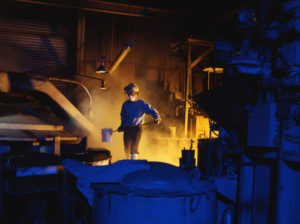
Steel Fabricated Parts
Steel is a ferrous metal used in both casting applications and fabrication processes. Steel fabricated parts are welded in order to manufacture a much bigger component and the assemblies may consist of forged or die cast parts. Castings, on the other hand, are made by pouring molten metal into a mold cavity and turned into a solidified form. Steel castings enable the designers of fixtures and the like to assemble the metal in places where it is required most.
Steel fabrications and castings seem interchangeable since they both have similar mechanical properties, although differences exist between both. The differences can influence the design and cost-effectiveness of final component manufacturing. Wrought products in general have a mechanical attributes, which is often called as directionality by designers. Directionality means that a part has sufficient tensile strength and ductility in the direction in which metal workers shape the metal with lower transverse.
Directional variations are nonexistent in steel castings but die cast steel has isotropic properties. This means stress can be exerted in all directions on steel castings without having to bother about achieving lower tensile strength and ductility, the two characteristics shown in wrought products’ in a transverse direction.
Designers of steel fabrications should know about the directional property of the constituent component and incorporate the same into the design of a larger component so that overstress due to heavy load in a crosswise direction can be avoided. In comparison to wrought steel, the cast steels’ mechanical properties are approximate of the average value of transverse and longitudinal directions in wrought products.
Transverse properties of wrought products are always lower than that obtained in steel castings, which means castings offer flexibility in design much more than steel fabrications tends to. Further, designers perform mechanical tests in a longitudinal direction to determine the properties required for wrought products in steel fabrication and in a transverse direction upon special requests from metalworkers.
Steel castings tend to be ductile and tough, which contradicts the common perception that a casting made of steel is brittle and is subject to fatigue failure. Steel alloys are not necessarily brittle. Brittleness is a metallurgy function. Since steel castings are isotropic, heat-treated uniformly, and better stress-relieved than a steel fabrication, more deformation without immediate fatigue failure is quite common in steel castings.
